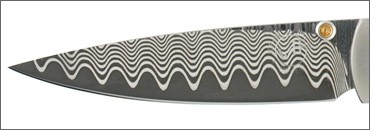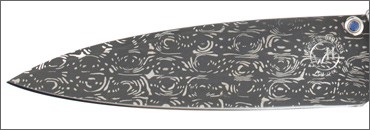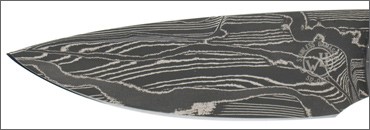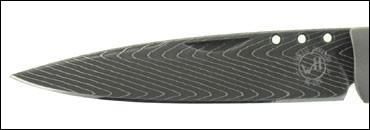Home  Designers
Designers  William Henry
William Henry  William Henry: Materials & Techniques
William Henry: Materials & Techniques
|
William Henry: Materials & Techniques
| Blades: ZDP-189 Hitachi Metals of Japan developed the power metal die steel ZDP-189. An unprecedented hardness of HRC 67 is achieved in this stainless alloy, resulting in superlative sharpness, edge holding and wear resistance. |
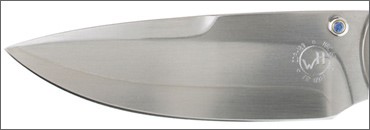 The blades of William Henry are an outcome of William Henry’s close work with Japanese partners to develop a laminate that captures a “core” center layer of ZDP-189 within softer layers of 420J2 stainless steel. The layers revealed through heat treating and polishing show an elegant seam in the blade that mimics the “temper lines” shown on traditional Samurai swords. |
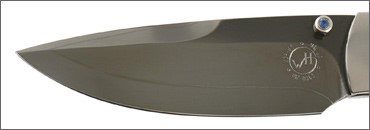 Black-Coated ZDP-189 is a surface coating with a molecular bond to the ZDP blade. The coating wears beautifully over time and use, thanks to its hardness of about 88 HRC; tougher than William Henry blade steel! | 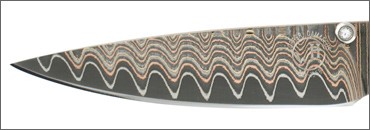 Copper Wave w/VG 5 core is an exclusive patent-pending William Henry blade steel that incorporates copper and stainless steel into a 45-layer Wave Damascus, featuring a core of VG-5 stainless steel with a hardness of HRC 59. |
Hand Forged Damascus: A wide range of custom-forged Damascus billets are used for William Henry blades. Principal supplier Mike Norris uses Sandvik 19C27, D2 and 302 SS with typical hardness when finished into blades of HRC 58-60. The forge of Mike Norris features patterns offered by William Henry include Hornet’s Nest, Raindrop, and Ribbon Lace. |
|
|
< |
|
|
|
Scales: Wood |
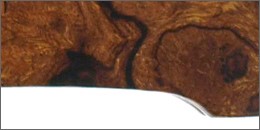 | 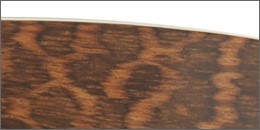 | 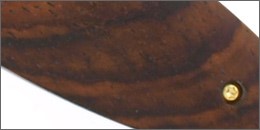 |
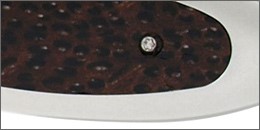 |
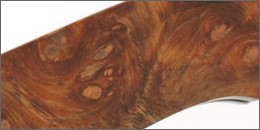 |
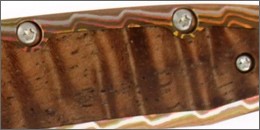 |
|
Scales: Seashell |
 |
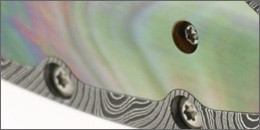 |
 |
| Scales: Fossil Material |
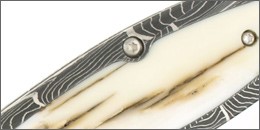
|
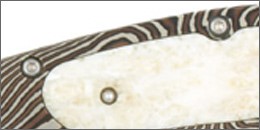
|
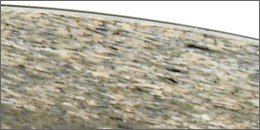
|

|
Frames / Handles / Bolsters: Titanium & Damascus |
 |
 |
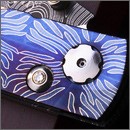 |
|
Mokume & Superconducter |
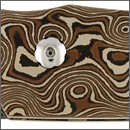
|

|
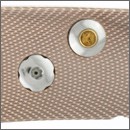
|
Embellishments & Adornments: |
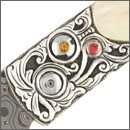 |
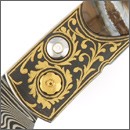 |
 |
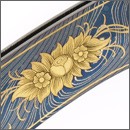 |
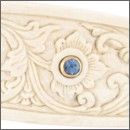 |
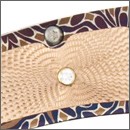 |
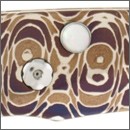 |
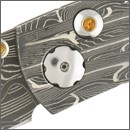 |
|
Gems & Fittings Only custom-made fittings are used at William Henry, right down to the micro-screws. Titanium and stainless steel are both used for buttons, pivots, screws, spacers/standoffs and thumb studs. As required, the stainless steel fittings are heat-treated to ensure a lifetime of unprecedented performance in mechanisms. Precious and semi-precious gem inlay are often part of lock buttons and thumb studs. Natural gems, ranging from opals to diamonds, are selected for quality and securely fit or adhered into matching cavities in fittings. This elegant William Henry touch in no way hampers the utility of the piece. Consider it a hallmark of the William Henry brand that creates functional works of art! |
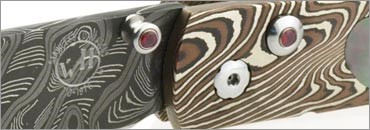 |
 |
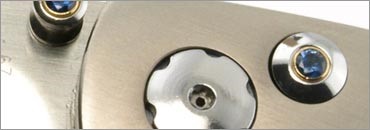 |
|
|

